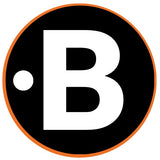The iliotibial (IT) band is a large band of fascia (connective tissue under the skin that encloses, stabilises, attaches, and separates the muscles) that extends from the outside margin of the pelvis, down the outside of the leg, attaching onto the top of the tibia (below the outside of the knee) in the lower leg. The IT band, along with the muscles that attach to it, function to stabilise the knee and provide motion at the hip.
Prevalence
ITBFS is an overuse type injury common in runners, athletes and individuals exposed to repetitive strain type motions in the work place. Pain typically results from repetitive compression of the fat pad that sits between the IT band and the lateral knee, or from repetitive friction of the IT band where it crosses the knee.Factors that may contribute to its onset include sudden increases in volume or intensity of exercise, increase in running mileage, improper warm up before activity, muscular tightness or inflexibility, genu varum (bow-legged appearance at the knees), excessive pronation of the foot, among other sources.
Symptoms
Symptoms are typically isolated to the lateral or outside portion of the knee and may include:
- Sharp pain or a dull ache which typically starts shortly after the onset of activity and may persist after stopping activity
- Muscular tightness
- Swelling
- Stiffness upon waking in the morning
- Pain while flexing the knee
Causes
- Increase running mileage or training intensity too quickly can be a source of injury
- Poor running mechanics
- Activities with lateral (side-to-side) movement or sudden direction changes
- Unsupportive footwear, such as sandals or poorly structured shoes
- Uneven terrain like trails or loose gravel as they may place a greater strain on the involved tissues
- High impact and high volume or intensity of exercise
- Being overweight or obese may increase the strain on the muscles and tendons in your lower legs
- Mechanics – depending on your alignment and mechanics, you may be predisposed to IT band strain.
What can i do at home?
